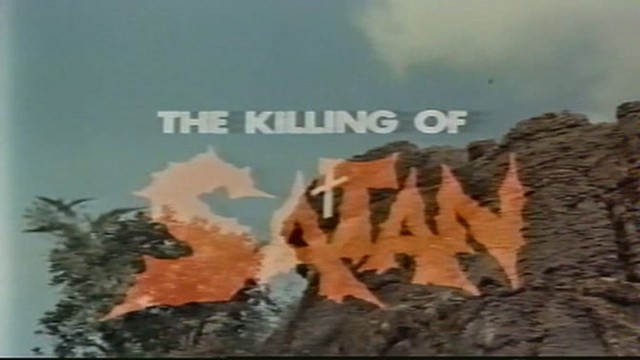
Lumaban ka, Satanas
Where to Watch Lumaban ka, Satanas

Lumaban Ka, Satanas, which translates to "Fight, Satan," is a classic Filipino horror-fantasy film released in 1983, directed by Efren C. Piñon and featuring some of the Philippines' most notable actors of the time including Ramon Revilla, Elizabeth Oropesa, and George Estregan. The film melds horror with aspects of action and drama to tell a tale steeped in Filipino folklore and mysticism, showcasing the rich cultural backdrop of the Philippines.
The film's protagonist is portrayed by Ramon Revilla, who plays a character named Lando. Lando is not an ordinary man; he is bestowed with unique abilities that set him apart from others. His life takes a dramatic turn when he finds himself locked in conflict with diabolical forces. This supernatural element of his character is partly what endeared the film to audiences, as Revilla's embodiment of a hero with otherworldly powers resonated with the cultural fascination around mysticism and spirituality.
Elizabeth Oropesa stars alongside Revilla, playing a vital character that is deeply entwined with the narrative’s supernatural elements. Her performance adds a layer of emotional complexity to the film, bringing a blend of strength and vulnerability that complements Revilla's more action-oriented role. Their on-screen chemistry drives the emotional core of the movie and provides the narrative with a human touch that counterbalances the film's darker themes.
George Estregan, another well-respected actor in the Philippine cinema, delivers a compelling performance as he embodies the antagonistic force in the story. His portrayal of the villain balances malevolence with a sense of depth, not merely presenting a one-dimensional evil but offering a character with motivations and a backstory that enrich the narrative tension.
The plot of Lumaban Ka, Satanas centers around the epic battle between good and evil. The story follows Lando as he discovers his fate to be intertwined with forces beyond the mortal realm. As the narrative unfolds, Lando faces harrowing challenges and confronts sinister entities that threaten the balance between the human world and the supernatural.
The movie's visual and special effects, while reflective of its time, were considered remarkable for Philippine cinema in the early 1980s. The use of practical effects to bring to life the otherworldly creatures and the physical transformations caused by the dark magic at play was both ambitious and ingenious for the period.
Lumaban Ka, Satanas doesn't shy away from exploring dark and often frightening themes. It touches upon subjects like possession, curses, and the occult, visceral reminders of the power of ancient beliefs and the shadowy edges of Filipino folklore. Despite the supernatural aspects of the story, the film effectively uses these themes to comment on the nature of human strength and resilience in the face of darkness.
The setting of the film offers a deep immersion in the rural landscapes of the Philippines, which is key to creating an authentic atmosphere for the haunting tale. Lush jungles, remote villages, and rustic settings serve as the playground for the mystical events that unfold, as well as the battles between Lando and his demonic adversaries. These elements together create a scenic tapestry that enriches the visual storytelling of the film.
The narrative structure of Lumaban Ka, Satanas incorporates elements of classic storytelling, including suspenseful buildup, mounting stakes, and intense confrontations. The pacing of the film remains engaging throughout, as Lando's journey is peppered with trials and tribulations that escalate to a climactic confrontation, all the while keeping viewers on the edge of their seats.
Lumaban Ka, Satanas is as much a reflection of Filipino spirituality and superstition as it is a work of cinematic entertainment. The movie succeeds in tapping into the deep-seated fears and beliefs within the culture and presents them in a manner that is both thrilling and thought-provoking. In the Philippines, where Christian beliefs are deeply intertwined with animistic and pre-colonial traditions, the film stands out for its ability to resonate with the audience's cultural consciousness.
The film's soundtrack also plays an integral role in setting the mood for each scene, transitioning from haunting melodies that underscore the horror elements to more rousing compositions during battle scenes, further immersing viewers in the film's world.
To this day, Lumaban Ka, Satanas remains a remarkable entry in the annals of Philippine cinema. It appeals to fans who cherish classic horror peppered with action and drama, along with those who have a penchant for cultural folklore. What the film may lack in contemporary special effects, it more than makes up for in storytelling, atmosphere, and an ensemble cast that brings to life an unforgettable tale of the eternal struggle between light and darkness.
Lumaban ka, Satanas is a Action, Adventure, Fantasy, Horror movie released in 1983. It has a runtime of 90 min. Critics and viewers have rated it mostly poor reviews, with an IMDb score of 4.7..
